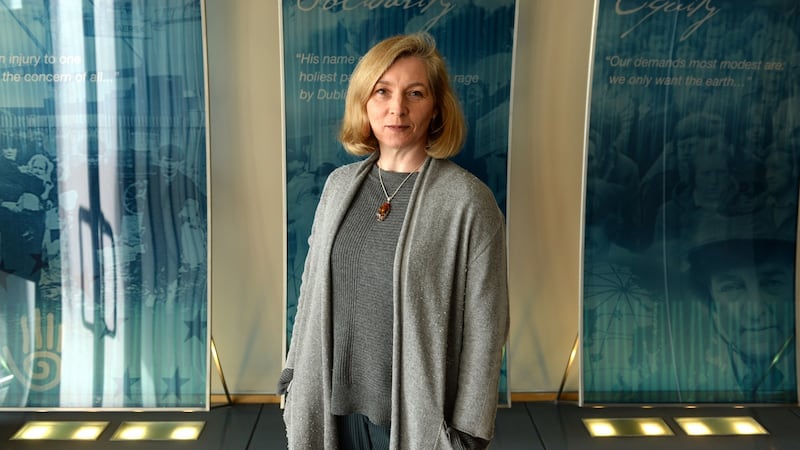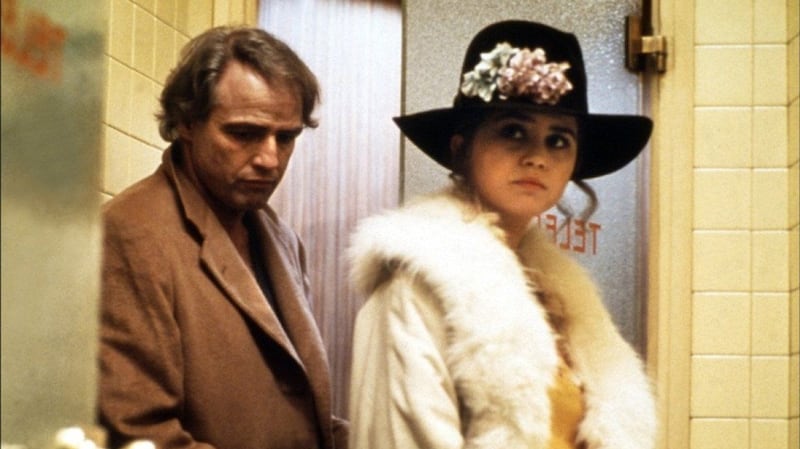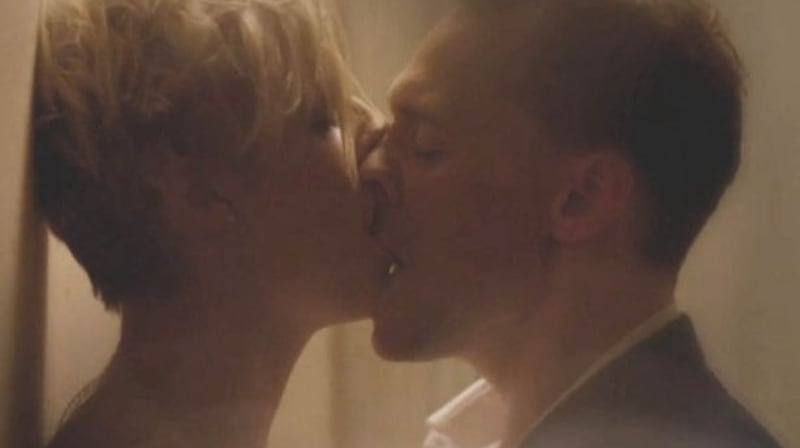There’s a lot more sex these days. On screen and on stage at least. Even the most middle of the road drama has become steadily raunchier and sexier. And as well as consideration of gratuitous nudity and sex, or industry harassment and bullying, or gaping pay disparities, an awareness of how important it is to keep performers safe when performing intimate material is moving centre stage.
“There is an assumption that people don’t know how to fight with swords, so you get a fight director in to teach them, and people assume you don’t know how to do a foxtrot, so you get a choreographer in. But the thing with sexual contact and sexual expression is the idea that everybody knows how to do it, so we don’t have to take care.”

This is Ita O’Brien. She’s an intimacy co-ordinator, which is a startling concept, until you hear her speak, and it all makes sense.
In performing sexual scenes, “when there isn’t transparency, when everybody isn’t in agreement and knows what’s going on, that’s when actors are left vulnerable”.
Exploring how sexualised or intimate scenes are created is a fascinating look behind the scenes of the dramas we watch.
Abusive process
The story of how director Bernardo Bertolucci and actor Marlon Brando conspired to film an unscripted rape scene in 1972's Last Tango in Paris without actor Maria Schneider's prior knowledge is an archetypal example of an abusive creative process. "I felt humiliated and, to be honest, I felt a little raped, both by Marlon and by Bertolucci," Schneider said years later. "Marlon said 'Maria, don't worry, it's just a movie,' but during the scene, even though what Marlon was doing wasn't real, I was crying real tears."

Bertolucci didn’t involve her, “because I wanted her reaction as a girl, not as an actress. I wanted her to react humiliated.”
This was more than 30 years ago, but an awareness of the potential physical, emotional and psychological damage caused by this approach is more recent, along with what many see as an abhorrent way of working, by some men in positions of power, which is no longer acceptable.
Cack-handed, unplanned sex scenes on screen and stage still happen.
Code of practice
There is no formal code of practice in performance industries for working with intimacy, simulated sex and nudity. “This can leave actors feeling anything from awkward, to abused, and even a little raped,” says O’Brien.
The dancer and choreographer has built a specialty over the past few years as an intimacy co-ordinator and movement director for stage and screen, teaching at Britain’s top acting schools and hosting workshops internationally. She’s working to get her “Sex Scenes on Set” adopted as best practice within five years, she says, across the board for producers, directors and actors working with scenes with sexual content.
The actors feel personally safe, so they can be artistically vulnerable
O'Brien recently addressed Irish Theatre Institute's Speak Up and Call it Out day of action and did a film industry workshop with Screen Training Ireland. She started developing the guidelines when the issue came up in her own plays, and was influenced by Vanessa Ewan at the Royal Central School of Speech & Drama, and Meredith Dufton at Mountview Academy of Theatre Arts, where O'Brien has worked on the guidelines.
It is work whose time has come.
Eavesdropping on sex – even if it is acted sex – is a particular experience. Watching a sexual scene in a film or on stage, we as audience don’t know whether that simulation has been made in a way that safeguarded actors, or was potentially damaging.
How not to do it
There are, O’Brien says, lots of examples of how not to do it. (As it were.)
She mentions BBC series Night Manager, where a key moment in the tense plot is a steamy secret sexual encounter between Tom Hiddleston and Elizabeth Debicki, which appears to have been poorly handled. In interview Debicki described: "We both wanted it to be over quickly. The faster we could shoot that bit, the better. We did it in one take and everyone on the set was like: 'Okay, I think we've got it now, let's move on.' Which was a relief for both of us." She comments: "They're strange things, sex scenes. They're inherently awkward to do and the best-case scenario is that you get on well with the other person, as Tom and I did. Afterwards, we parted ways and 10 minutes later met at the tea trolley for a normal conversation. It was as if it never happened."

More traumatically, Nicole Kidman has described playing a domestic abuse victim in Big Little Lies. The graphic and violent sex scenes with Alexander Skarsgard, who played her abusive husband, were not rehearsed. There was "an enormous amount of trust there, yet at times it felt dangerous and really upsetting, and I would go home afterwards and I would feel – I would keep on a very brave face at work and then I would go home and I didn't realise how much it had penetrated me. And it affected me in a deep way."
Kidman’s body was covered in bruises afterwards, but she insisted on staying in character. “I felt very exposed and vulnerable and deeply humiliated at times.” She recalls “lying on the floor in the bathroom at the very end” and “I just wouldn’t get up in between takes. I was just lying there, sort of broken and crying.”
Higher expectations
There are ever higher expectations of sexual openness in performance, says O’Brien, so the pressures on the actor increase. She points out “physical intimacy, even acted, can trigger deep emotional reactions in performers, and when acted intimacy or violence has not been worked through in a safe process, trauma may surface long after the event”.
It doesn’t have to be like this.
O'Brien cites Paul Verhoeven's Showgirls as an example of good practice. He has said, "The actors knew exactly what they were going to do. All sex scenes in my movies are precisely choreographed. There is no question of 'Do I lick her nipple or not? Do I go down on her? How far, and what do you see?' Every move is already clear before we start, because I talk with my actors and actresses in a very open way about what will be visible, where the camera will be, what the actions are. I do it in extreme detail, using words like 'nipple' and 'vagina' continuously to make absolutely clear to the actors how we are going to shoot that scene. And when we shoot it, we really stick to the script. I don't come to the actors later with additional details that are perhaps unacceptable; it should be clear in the script what's happening."
No nonsense approach
O’Brien’s approach in talking about best practice is open and no nonsense, but “in service of the script”. Her guidelines suggest using an intimacy director or co-ordinator. It sets out a modus operandi, where actor and director identify the role of the scene, the characters’ storyline and then the powerplay and beats of the scene. They identify the scene’s basic shape and agree physical touch, “sculpting” the physicality while describing out loud what they are doing as they map out the touch. They repeat the moves till they are in body memory, and only then do they look at the character’s emotional journey. The process pulls it together to create the intimate scene. So a scene can be quite raunchy, but because it is planned and by permission and consent, “the actors feel personally safe, so they can be artistically vulnerable”.
There are nuts and bolts: nudity only from action to cut with actors otherwise covered; a third party keeping it professional, not private; no nude genitals touching but patches or modesty barriers; no tongues in kissing; closed sets; no sex scenes or nudity in auditions or screen tests unless agreed beforehand; written summaries of agreed sexual scenes.
If all that sounds dry and unsexy, it’s because the code is all about the how to, not the goal, which is to create sexy.
Rehearsals
It’s fascinating watching how all this works in rehearsal, with actors and director planning and blocking moves – first a kiss here, on the neck, then left hand here, but not there, this far up on the thigh, “is this okay?” then turn. It’s like watching choreography, which is essentially what it is, where a sexual scene is broken down, and then the pieces are put together. The technique leads to “authentic, believable intimate scenes”, says O’Brien, but keeps the actors safe.

She uses dance artist Rudolf Laban’s movement analysis – a language to describe or visualise – to break down sexual and intimate scenes into constituent elements – “slide, float, glide, wring, push, flick, punch, dab, slash”. And one of her most fascinating workshop techniques draws on animal images and mating rhythms, to divorce performers’ private sexuality from their performance.
With a name like hers, yes, Ita O'Brien has Irish blood. She grew up in Bromley, Kent, but her dad's family (his father was a horse trainer) emigrated from Clonmel when he was 10, and her mother is from Cookstown, Co Tyrone. She spent her childhood summers on McKennas' dairy farm in Cookstown (can she milk a cow? "I used to be able to").
First generation Irish Catholic repression informed her work – particularly her play April's Fool in 2009, an intergenerational story about hidden abuse, and a few years later, Does My Sex Offend You?, which explored the dynamic of abuse. During R&D for that show in 2014 she started to devise a way of working with intimate material.
Then while developing her “Intimacy on Set” guidelines, #metoo exploded, and with it a greater awareness of the issues. It has proved to be the right time, right place. Her own background too, was critical. “If I hadn’t had those experiences [of Catholic guilt] I wouldn’t be doing this now. There is an absolute connection.”



















